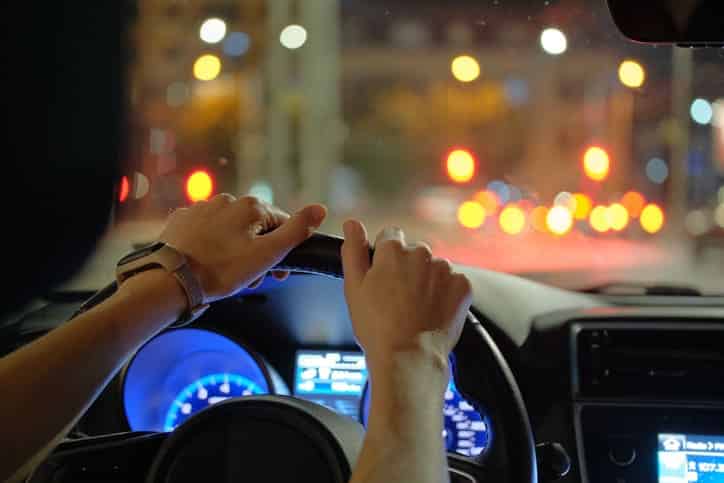

(844) - 444-4444

If you’re out with the bats and owls, driving after dark, just remember: Those nocturnal critters, with their big ears and eyes and echolocation, are better equipped to get around at night than other drivers.
Humans are diurnal rather than nocturnal, meaning that they are not ordinarily active in the nighttime. According to the National Highway Traffic and Safety Administration, motorists and their passengers are three times more likely to be killed at night, when visibility is low. People are also more likely to be tired or drowsy. According to a survey conducted by the Centers for Disease Control and Prevention an estimated 1 in 25 adults fall asleep at the wheel every 30 days.
“Nighttime driving is dangerous and is one of the most challenging driving situations for most drivers,” according to a December 2019 article published in the journal Ophthalmic & Physiological Optics (OPO) entitled “Nighttime driving: visual, lighting and visibility challenges.”
The author posits that, when adjusted for distance traveled, fatality rates are higher at night. The primary culprit, not surprisingly, is low light. Another factor is light and glare from headlights and road lighting. Another factor was visual impairment often seen with older drivers. The study pointed to research which emphasized the importance of vulnerable road users wearing reflective clothing to improve visibility and safety.
Darkness reduces visibility—sometimes to 500 feet or less, even with headlights, according to the National Safety Council.
While headlights illuminate the road and surrounding area, those that are too bright have the potential to temporarily reduce the visibility of other motorists. Headlight beams are much brighter on many newer vehicles, but is that a good thing?
While some studies have found that brighter headlights may lead to fewer crashes, there is some evidence that overly bright headlamps, when elevated (as in the case with certain SUV models), can temporarily reduce the visibility of oncoming motorists.
Nighttime drivers are more likely to be tired, too. As mentioned above, the Centers for Disease Control and Prevention estimates that one in 25 adults falls asleep at the wheel. Most accidents involving fatigued drivers happen between midnight and 2 a.m. and 4 and 6 in the morning, according to data cited by the National Safety Council.
Driving at night is often unavoidable. People have places to go after sunset. That nighttime driving is more dangerous is, however, no defense in an accident claim. New York motorists must always be careful, making safety adjustments to accommodate for time of day just as they do for weather, road conditions, and other variables.
If you were injured in a New York car crash, an experienced New York personal injury attorney can examine the facts of your accident and advise you how likely you’d be to succeed if you were to file a claim for pain and suffering.
Sometimes, despite taking all the right precautions, you can’t avoid being involved in a car accident. If you’re injured in a crash and are seeking an experienced attorney, please do not hesitate to contact the car accident injury attorneys at William Mattar, P.C. Our team is available 24/7. Please fill out the contact form or call (844) 444-4444.





